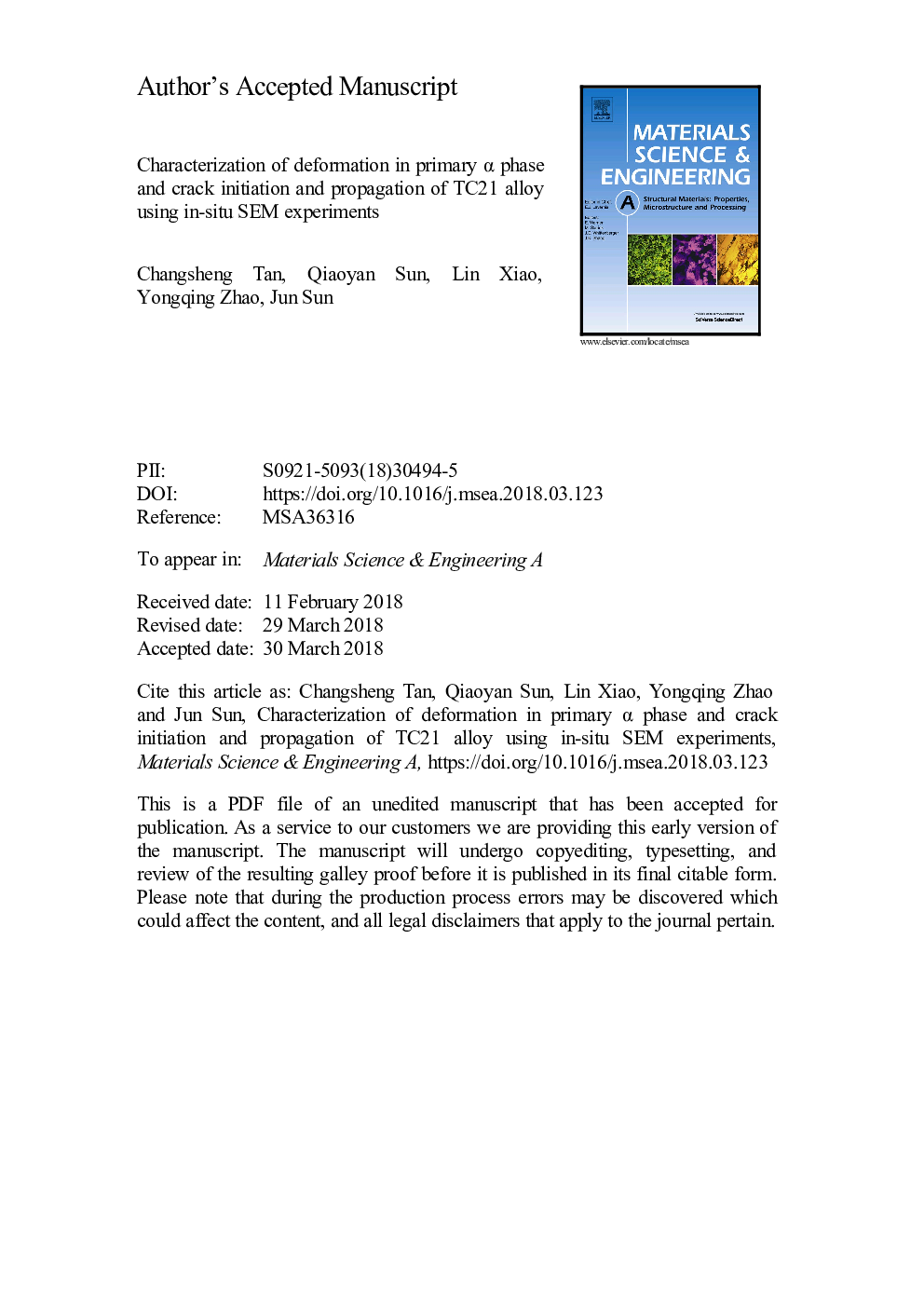| Article ID | Journal | Published Year | Pages | File Type |
|---|---|---|---|---|
| 7972257 | Materials Science and Engineering: A | 2018 | 21 Pages |
Abstract
In present work, the localized deformation, crack initiation and propagation behavior of Ti-6Al-2Sn-2Zr-3Mo-1Cr-2Nb-0.1Si (TC21) titanium alloy was investigated through the in-situ scanning electron microscope (SEM) test and electron backscatter diffraction (EBSD). The results indicate that deformation in α phase is mostly accommodated by the prismatic slip. The localized deformation is concentrated at the interface of primary α lath. Some parallel slip bands with prismatic and pyramidal slip are prevalent in primary α lath, while the multiple slip bands with prismatic slip are dominant in equiaxed primary α phase. Higher ability to coordinate local plastic strain (nearly to 79.5%) is induced in equiaxed α than the primary α lath (7.9%). Most of the cracks easily initiate at the shear bands in primary α lath, which is a fatal site for the tensile deformation. The main crack propagates quickly along the shear bands or interfaces of α lath and then penetrates into the βtrans matrix and also transfers across the equiaxed α phase along the slip bands. The results indicate that the high compatibility of deformation in equiaxed primary α phase delays the initial crack nucleation. Whereas, it does not show satisfied resistance against crack propagation in front of the main crack tip due to the abundant slip bands.
Related Topics
Physical Sciences and Engineering
Materials Science
Materials Science (General)
Authors
Changsheng Tan, Qiaoyan Sun, Lin Xiao, Yongqing Zhao, Jun Sun,
